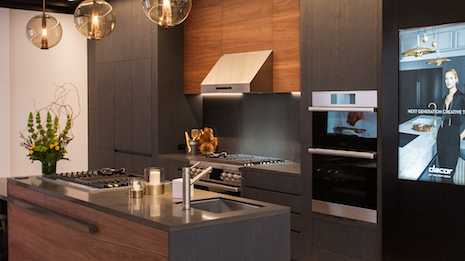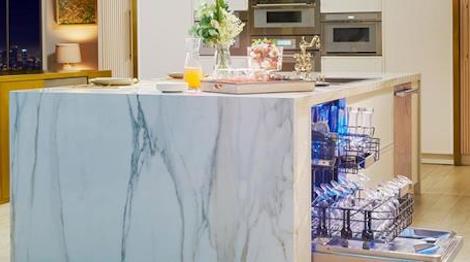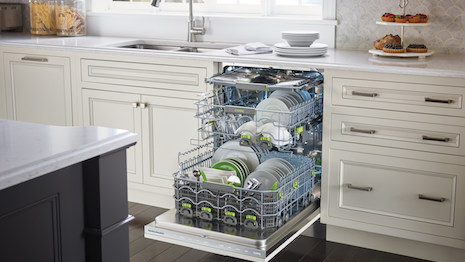 Dacor's Chicago showroom. Image courtesy of Dacor, photo by Mark Campbell
Dacor's Chicago showroom. Image courtesy of Dacor, photo by Mark Campbell
Luxury home brands need to clarify their identities and positioning to successfully stand out in an increasingly competitive market.
According to a case study by brand experience agency Mode, many premium and luxury home brands have room to improve how they present themselves to consumers on- and offline. Upscale brands including Bertazzoni and Thermador still were found lacking cohesion between their digital and physical ecosystems.
“Many well-known and well-respected products relied so heavily on product reputation and experience in lieu of a truly integrated brand experience,” said John Pietrafesa, partner and creative director at Mode. “A variety of factors led to a fragmented brand experience across channels.”
Mode evaluated more than 180 product lines across nearly 140 brands in 16 categories, including large appliances, lighting, faucets and smart home devices. Consumers and industry experts reviewed brand performance in terms of reputation, online and physical presence and marketing campaigns.
Brand cohesiveness
In a similar manner to other sectors, the luxury home furnishings business is facing disruption.
Consumers are increasingly expecting home goods and appliances to incorporate more technology, such as voice control. Digital media is also becoming a more acceptable way for consumers to search for home furnishings, creating opportunities for direct-to-consumer upstarts.
Thermador has a robust online presence. Image credit Thermador
These factors underscore the importance of luxury home brands being able to effectively communicate their positioning, whether it be through online or physical retail experiences.
Overall, the large appliance category was one of the strongest with an average score of 73.7 on a 100 point scale.
Italian appliance maker Bertazzoni was the top performer in the large appliance category, with 92.9 points. However, it performed most poorly in terms of social media engagements and customer reviews.
Luxury appliance maker Thermador had a stronger digital and social media presence, but was viewed as lacking an effective physical identity, resulting in a score of 86.2.
Failure to effectively communicate premium positioning can result in luxury home brands having below-average reputations.
Sub-Zero and Wolf is expanding into dishwashers. Image courtesy of Sub-Zero and Wolf
Appliance brand Sub-Zero and Wolf was one of the lowest scoring large appliance brands, with a score of 67.1. While its catalog was praised for high-quality photography, poor packaging dinged its brand luster.
With a score of 63.2, German appliance maker Miele was considered “consistent” across channels but did not offer an intuitive user experience on its Web site.
Presence matters
Despite luxury brands adapting to a digital marketplace, home furnishings still have a high-touch nature that necessitates engaging retail environments.
Following its rebrand in 2018, appliance maker JennAir is looking to continue defying conventions in its retail spaces.
The Whirlpool Corporation-owned label is rolling out a new showroom concept that focuses on enabling customers to curate and customize their own kitchens. JennAir notes that visualization is often the key for architects and designers to be able to sell a client on an appliance (see story).
Similarly, U.S. appliance maker Dacor is expanding its retail presence with the opening of its second showroom.
The Dacor Kitchen Theater showcases the brand’s emphasis on entertaining, allowing homeowners and trade professionals to see and touch products in person. After opening its first showroom in New York in 2019, Dacor is also planning to launch a third flagship space in Southern California this fall (see story).
According to Mode, which awarded Dacor 78.4 points, the appliance maker has potential for its physical extensions.
“Luxury brands are experiencing shifts in consumer mindset around their expectations for excellence in brand experiences — the changing context in the home and relationship consumers have with home goods, the evolving path-to-purchase and expanding competitive ecosystem,” Mr. Pietrafesa said. “All of these drivers reinforce more than ever how critical it is for home brands to develop integrated brand experiences that establish clarity, instill confidence and amplify their unique value.”

